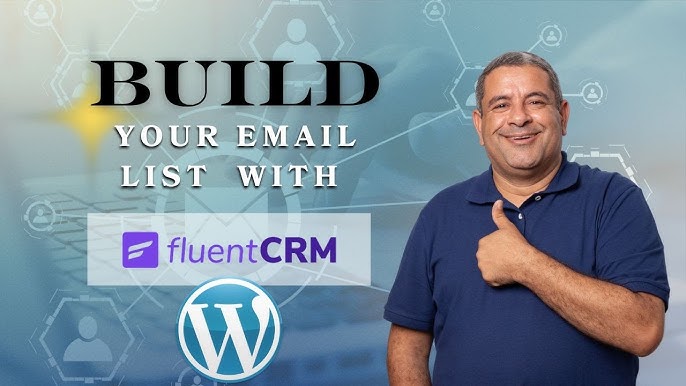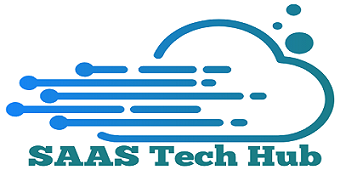Building an email marketing platform can seem overwhelming. But with the right steps, it’s achievable.
In today’s digital age, email marketing is essential. It’s a powerful tool for businesses to reach their audience. Creating your own platform allows for customization and control. You can tailor it to fit your unique needs. Plus, it saves costs in the long run.
This guide will walk you through the process. From planning to execution, we cover it all. Whether you’re tech-savvy or a beginner, these steps are easy to follow. Ready to dive in? Let’s get started on building your own email marketing platform.
Introduction To Email Marketing
Email marketing is a powerful tool for businesses. It helps in reaching customers directly. This method has been used for years. It remains one of the most effective ways to communicate. In this section, we will explore the basics of email marketing.
Importance Of Email Marketing
Email marketing is vital for business growth. It allows direct communication with customers. This direct line can build strong relationships. It helps in delivering personalized content. Emails can be tailored to specific customer needs. This personal touch can increase engagement. Email marketing also offers high return on investment. It is cost-effective compared to other marketing methods.
Benefits For Businesses
Email marketing has many benefits for businesses. It helps in increasing brand awareness. Regular emails keep your brand in the customer’s mind. Email campaigns can drive traffic to your website. They can lead to higher sales. Emails can also provide valuable customer insights. You can track open rates and click rates. This data helps in understanding customer behavior. It allows for better marketing strategies in the future.

Credit: www.sendx.io
Planning Your Email Marketing Platform
Creating an email marketing platform requires careful planning. A well-thought-out strategy will help you stay on track. This section will guide you through the planning phase. We will focus on defining goals and identifying your target audience.
Defining Goals
Defining clear goals is the first step. Start with the end in mind. What do you want to achieve with your email marketing?
- Increase website traffic
- Boost sales
- Engage existing customers
- Generate new leads
Once you define your goals, you can create a plan to achieve them. Use the SMART criteria. SMART stands for Specific, Measurable, Achievable, Relevant, and Time-bound. This ensures your goals are clear and reachable.
| Goal | SMART Criteria |
|---|---|
| Increase website traffic | Specific: Drive 20% more visits in 3 months |
| Boost sales | Measurable: Achieve $10,000 in sales from email |
| Engage existing customers | Achievable: Increase email open rates by 15% |
| Generate new leads | Time-bound: Gain 500 new subscribers in 6 months |
Identifying Target Audience
The next step is to identify your target audience. Knowing who you are speaking to is crucial. Start by creating a buyer persona. A buyer persona is a detailed description of your ideal customer.
Consider these key factors:
- Age
- Gender
- Location
- Occupation
- Interests
- Buying behavior
Use surveys and analytics tools to gather data. This data will help you understand your audience better. Tailor your messages to their needs and preferences. This will make your emails more engaging and effective.
Here’s an example of a buyer persona:
Name: Jane Doe
Age: 35
Gender: Female
Location: New York
Occupation: Marketing Manager
Interests: Social Media, Blogging, Travel
Buying Behavior: Prefers online shopping, values customer reviews
With a clear goal and a well-defined audience, you are ready to start building your email marketing platform.
Choosing The Right Software
Building an email marketing platform requires careful selection of the right software. The software you choose will impact your email campaigns’ success. Therefore, understanding your options is crucial.
Popular Email Marketing Tools
Many tools are available to help you manage your email marketing. Below are some popular choices:
| Tool | Features | Pricing |
|---|---|---|
| Mailchimp | Drag-and-drop editor, automation, analytics | Free plan available, paid plans start at $10/month |
| Constant Contact | Template library, list management, social media integration | Plans start at $20/month |
| Sendinblue | SMS marketing, transactional emails, CRM features | Free plan available, paid plans start at $25/month |
| GetResponse | Landing pages, webinars, marketing automation | Plans start at $15/month |
Criteria For Selection
Choosing the right email marketing software depends on several factors. Here are some criteria to consider:
- Ease of Use: The software should be easy to navigate. A user-friendly interface will save you time and effort.
- Features: Identify the features you need. For example, automation, templates, and analytics are essential.
- Scalability: The tool should grow with your business. Look for options that accommodate increasing subscribers.
- Integration: Ensure the software integrates with your existing systems. This includes CRM, e-commerce platforms, and social media.
- Support: Reliable customer support is crucial. Choose a provider that offers responsive support options.
- Pricing: Compare pricing plans. Choose a plan that fits your budget without compromising features.
Evaluating these factors will help you select the best email marketing software for your needs. Remember, the right tool can enhance your email campaigns significantly.

Credit: mailsend.com
Setting Up Your Email Marketing Platform
Setting up your email marketing platform is the first step toward effective communication with your audience. This process involves creating an account, configuring essential settings, and ensuring the platform is ready to send emails. Let’s dive into the steps you need to follow.
Creating An Account
First, choose a reliable email marketing service provider. Popular options include Mailchimp, Constant Contact, and Sendinblue. Visit their website and sign up for an account. You will need to provide basic information like your name, email address, and company details. Some platforms offer free trials, so you can test their features before committing.
After signing up, you will receive a confirmation email. Click the link in the email to verify your account. Once verified, you can log in and start setting up your email marketing platform.
Configuring Settings
Next, configure your account settings. Begin by setting up your sender name and email address. These details appear in the recipient’s inbox, so make sure they are professional and recognizable. For example, use your company name and a business email address.
Then, customize your email template. Most platforms offer pre-designed templates that you can edit to match your brand’s look and feel. Add your logo, choose your brand colors, and select a font that aligns with your company’s style.
Don’t forget to set up your email signature. This section usually includes your name, job title, and contact information. It adds a personal touch and makes your emails look more professional.
Finally, configure your opt-in settings. This ensures you have permission to send emails to your subscribers. Enable double opt-in if your platform supports it. Double opt-in requires subscribers to confirm their subscription, which helps maintain a clean email list.
Designing Effective Email Templates
Creating effective email templates is crucial for email marketing success. A well-designed template ensures your message is clear and engaging. It also improves readability and encourages action. Let’s explore some best practices and tools for designing email templates.
Best Practices For Design
First, keep your design simple. A cluttered email can confuse readers. Use a clean layout with plenty of white space. This makes your content easy to read. Divide your email into clear sections with headers and subheaders.
Next, use a mobile-friendly design. Many people read emails on their phones. Ensure your template looks good on all devices. Use responsive design techniques. Test your template on different screen sizes.
Also, use engaging visuals. Images and graphics can make your email more appealing. But don’t overdo it. Too many images can slow down loading times. Use high-quality images that support your message.
Choose readable fonts. Avoid using too many different fonts. Stick to one or two fonts that are easy to read. Use a larger font size for important text. This helps highlight key information.
Lastly, include a clear call-to-action (CTA). Make sure your CTA stands out. Use buttons or bold text. A strong CTA encourages your readers to take action.
Tools For Creating Templates
There are many tools available to help you create email templates. These tools make the design process easier. They often include pre-made templates you can customize. Here are a few popular options.
Mailchimp is a widely used tool. It offers a drag-and-drop editor. You can easily customize templates to fit your brand. It also includes analytics to track your email performance.
Another option is Constant Contact. This tool also has a user-friendly editor. It offers many templates for different industries. You can create professional emails quickly and easily.
Canva is a great tool for designing email graphics. It has a wide range of templates and design elements. You can create custom images to enhance your emails.
Lastly, consider using Litmus. This tool allows you to test your email designs. You can see how your email will look on different devices and email clients. This ensures your template works well for all readers.
Building Your Email List
Building your email list is crucial for a successful email marketing platform. A strong email list helps you connect with your audience. This connection can lead to higher engagement and conversions. Let’s explore the methods to collect emails and ensure compliance with regulations.
Methods For Collecting Emails
There are many ways to collect emails. Offering a free resource or a discount can entice users. Create a signup form on your website. This form should be simple and easy to fill out. Place it in a visible spot like the homepage or blog section.
Social media can also help. Share the benefits of joining your email list on your social channels. Use engaging posts to attract your followers. Partnering with other businesses can expand your reach. Host a giveaway or a contest. Make joining your email list a requirement for entry.
Ensuring Compliance With Regulations
Compliance with email regulations is essential. This protects your business and your subscribers. The General Data Protection Regulation (GDPR) and the CAN-SPAM Act are two key regulations. Always get explicit consent from users before adding them to your list.
Provide a clear privacy policy. Explain how you will use their information. Include an easy way for subscribers to opt out. Every email should have an unsubscribe link. Regularly clean your email list. Remove inactive subscribers to keep your list healthy.
Crafting Compelling Email Content
Crafting compelling email content is crucial for successful email marketing. Engaging content captures the reader’s attention and drives action. The right strategies can turn a simple email into a powerful marketing tool. Let’s explore how to create content that resonates with your audience.
Subject Lines That Work
The subject line is the first thing your audience sees. A strong subject line can increase your open rates. Use clear and concise language. Avoid using too many words. Aim for 5 to 9 words. Include action words to entice readers. Test different subject lines to see what works best. Personalize the subject line to make it more engaging.
Personalization Techniques
Personalization can make your emails feel more relevant. Use the recipient’s name in the greeting. Segment your audience based on their interests. Tailor your content to match these segments. Include personalized product recommendations. Address your audience’s needs directly. This builds a connection and improves engagement.

Credit: www.youtube.com
Automating Your Email Campaigns
Automating your email campaigns can save time and increase efficiency. With automation, you can set up email sequences to send automatically. This ensures timely communication with your audience. Automation also helps in nurturing leads and increasing engagement.
Setting Up Automation Workflows
Creating automation workflows is essential. Start by defining your goals. Understand what you want to achieve with your emails. Next, segment your audience. Group your subscribers based on their interests or actions.
Use an email marketing tool. Most tools offer drag-and-drop editors. These editors make it easy to create workflows. Set triggers for your emails. Triggers could be actions like signing up or purchasing. Define the actions your system should take after each trigger.
Examples Of Automated Emails
Welcome emails are a great example. Send a welcome email when someone subscribes. This email can introduce your brand and what to expect. Another example is abandoned cart emails. Remind customers of items left in their cart.
Birthday emails are also effective. Send a special offer on a subscriber’s birthday. This personal touch can increase loyalty. Lastly, consider re-engagement emails. These emails target inactive subscribers. Encourage them to return with a special offer or update.
Analyzing And Optimizing Performance
Analyzing and optimizing performance is crucial for any email marketing platform. Regular analysis helps you understand what works and what does not. Optimizing ensures your campaigns are effective and reach their full potential. This section provides insights into key metrics to track and strategies for improvement.
Key Metrics To Track
Tracking the right metrics is essential for optimizing your email marketing performance. Here are some of the key metrics to monitor:
- Open Rate: This metric shows the percentage of recipients who opened your email. A higher open rate indicates that your subject lines and sender names are engaging.
- Click-Through Rate (CTR): This metric measures the percentage of recipients who clicked on a link within your email. It helps gauge the effectiveness of your email content and call-to-actions.
- Bounce Rate: This shows the percentage of emails that were not delivered. A high bounce rate can indicate issues with your email list or delivery settings.
- Conversion Rate: This metric tracks the percentage of recipients who completed a desired action, like making a purchase. It’s crucial for measuring the overall success of your campaigns.
- Unsubscribe Rate: This indicates the percentage of recipients who opted out of your email list. A high unsubscribe rate can highlight issues with content relevance or frequency.
Strategies For Improvement
Improving your email marketing performance involves several strategies. Here are some effective ones:
- Segment Your Audience: Divide your email list into smaller segments based on demographics, behaviors, or preferences. This allows you to send more targeted and relevant content.
- Personalize Your Emails: Use recipients’ names and tailor content to their interests. Personalized emails have higher engagement rates.
- Optimize Subject Lines: Craft compelling subject lines that grab attention. Keep them short and relevant to increase open rates.
- A/B Testing: Conduct A/B tests on different elements such as subject lines, email content, and send times. Analyze the results to determine what works best.
- Clean Your Email List: Regularly remove inactive subscribers and invalid email addresses. This helps improve deliverability and engagement rates.
By tracking key metrics and implementing these strategies, you can significantly improve the performance of your email marketing platform.
Scaling Your Email Marketing Efforts
Scaling your email marketing efforts means reaching a larger audience. It also means engaging them effectively without losing the personal touch. Growth involves advanced techniques and integrating with other marketing channels. Let’s explore these strategies in detail.
Advanced Techniques
Advanced techniques can help you maximize your email marketing efforts. Here are some methods to consider:
- Segmentation: Divide your email list into smaller groups. Use criteria like demographics, behavior, or purchase history.
- Automation: Set up automated email workflows. Trigger emails based on specific user actions.
- Personalization: Use subscriber data to create personalized content. Address users by their names and tailor content to their interests.
- A/B Testing: Test different versions of your emails. Compare subject lines, content, and CTAs to see what works best.
Integrating With Other Marketing Channels
Integrating your email marketing with other channels can amplify your reach. Here’s how to do it:
| Channel | Integration Method |
|---|---|
| Social Media | Share your emails on social platforms. Encourage your subscribers to follow you. |
| Blog | Promote your blog posts in your emails. Add social sharing buttons in your emails. |
| Website | Use pop-ups and signup forms. Capture email addresses directly from your website. |
By integrating email with other channels, you create a cohesive marketing strategy. This synergy boosts your overall marketing performance.
Frequently Asked Questions
What Tools Are Needed To Build An Email Marketing Platform?
To build an email marketing platform, you need an email service provider, automation tools, and analytics software. These tools help manage campaigns, track performance, and ensure deliverability.
How Can I Create Effective Email Templates?
Effective email templates require a clear design, compelling content, and a strong call-to-action. Use personalization and ensure mobile responsiveness to enhance engagement.
What Are The Key Features Of An Email Marketing Platform?
Key features include automation, segmentation, analytics, and personalization. These features help you create targeted campaigns, monitor performance, and optimize results.
How Do I Ensure Email Deliverability?
Ensure email deliverability by maintaining a clean email list, using double opt-in, and avoiding spammy content. Regularly monitor bounce rates and sender reputation.
Conclusion
Building an email marketing platform may seem daunting. But break it down. Follow the steps. Choose the right tools. Design engaging templates. Segment your audience. Analyze your results. Make necessary adjustments. Stay consistent. Your email marketing will improve with time.
Keep learning. Stay updated with trends. Success comes with effort and persistence. Happy emailing!


